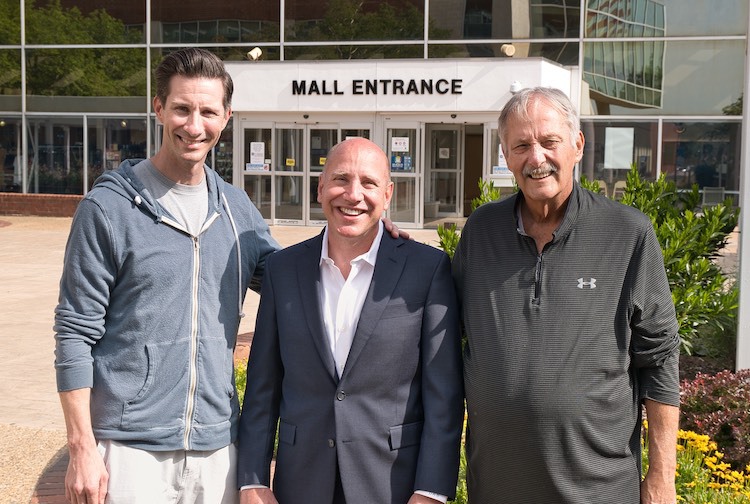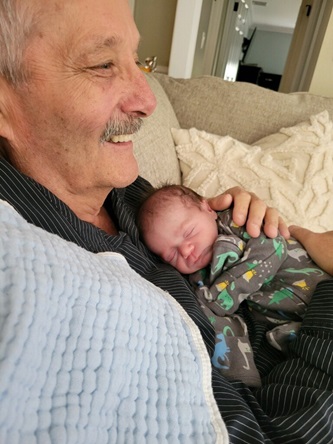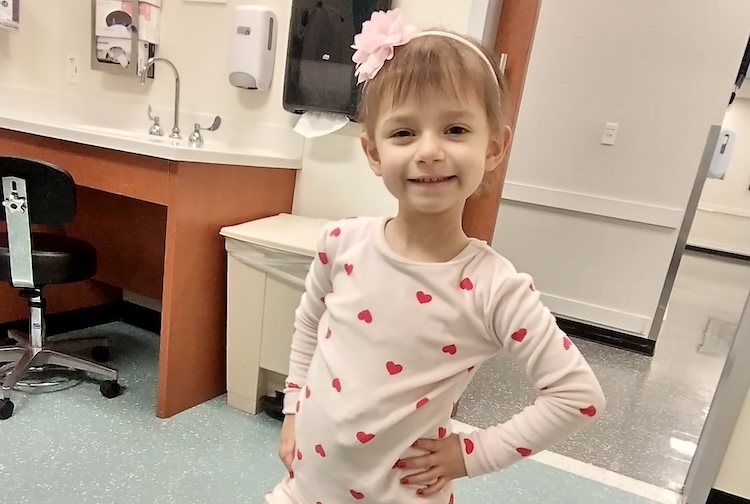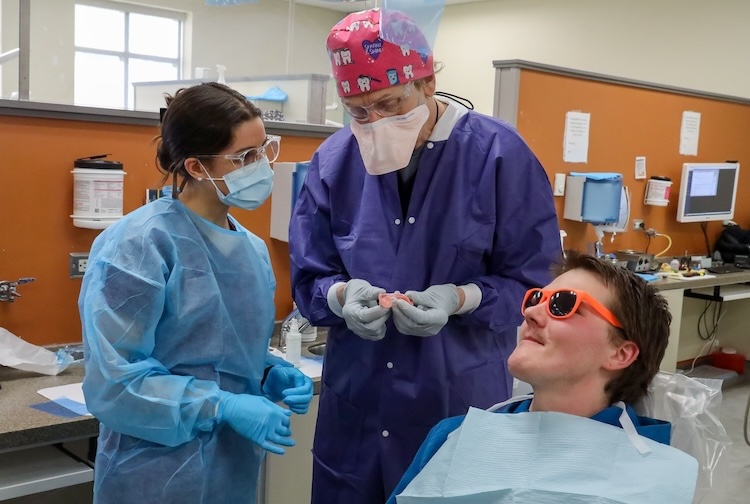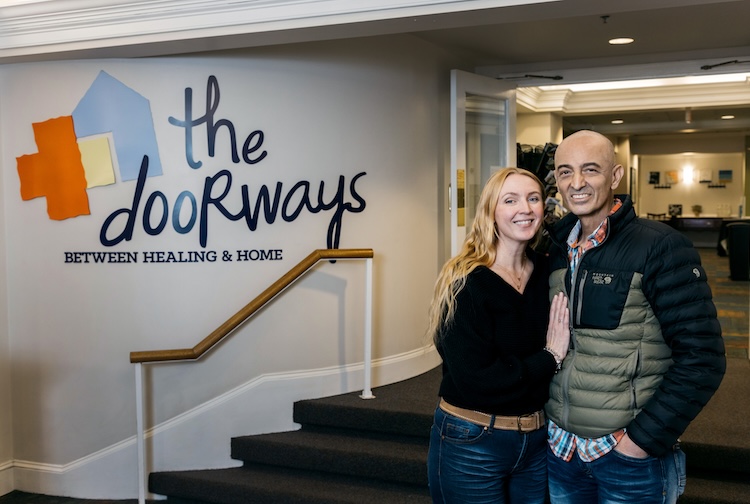
A dad’s life saved — with less scarring for son — in first fully robotic living donor liver transplant at VCU Health
Team at VCU Health Hume-Lee Transplant Center performs their first fully robotic-assisted living donor liver surgery on a patient.
June 14, 2023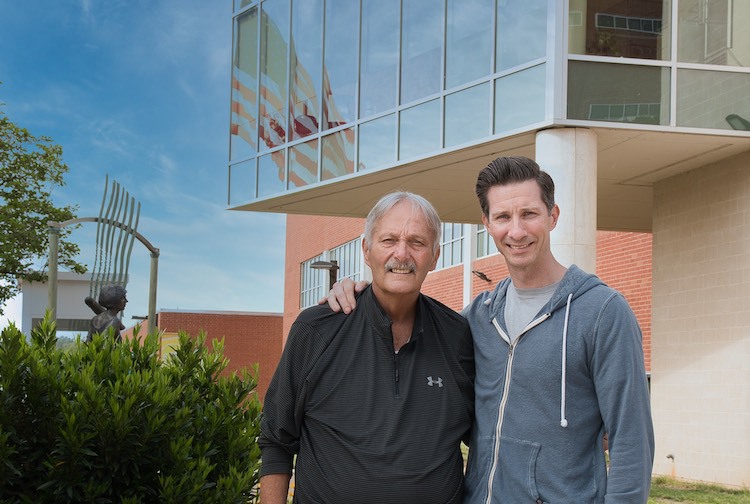 Father and son, James and Jim Busic received the first fully robotic living donor liver transplant surgery at VCU Health Hume-Lee Transplant Center. (VCU Enterprise Marketing and Communications)
Father and son, James and Jim Busic received the first fully robotic living donor liver transplant surgery at VCU Health Hume-Lee Transplant Center. (VCU Enterprise Marketing and Communications)
By Jeff Kelley
James “Jim” Busic and his wife, Michele, were awaiting the birth of their son last year.
But as a new life drew near, another life — that of the Long Island, New York man’s father, also named James — was at risk of being lost because of liver cancer.
Word came from doctors that James would need a new liver, and in November he joined a national waiting list where demand for organs outweighs supply.
People die every day waiting for livers, kidneys and other critical organs. But there is a way to avoid competing with the more than 10,500 patients on the national waiting list in need of a liver: find a living person willing to donate the organ.
With these statistics in mind, Jim immediately began the process of learning whether he could give his dad part of his own liver. Their blood types matched, which helps, but the same blood isn’t required nor is it the defining factor for matching. After a series of tests — psychological exam included — specialists cleared him for living donation in March.
And not only did he save his father’s life a few weeks later, but Jim also became the first patient at VCU Health Hume-Lee Transplant Center to undergo a fully robotic-assisted living donor liver hepatectomy.
“He was the ace in my hand,” said James of his son. “He took a big step for me, and that’s what family does. He’s number one in my book, and always will be.”
The road to Richmond
A Florida resident, James was diagnosed with cirrhosis in the early 1990s, and has lived with the stabilized condition since. But a diagnosis of liver cancer nearly three years ago compounded the condition.
By mid-2022, James’ liver cancer was getting worse, and it was clear to a team at the VA Orlando Healthcare System that he would need a transplant. Shelly Ann Scott, D.N.P., nurse practitioner with the Orlando VA, gave the Army Veteran three options: medical centers in Tennessee, Pittsburgh or at VCU, which has a partnership with the Central Virginia VA Healthcare System.
“I asked, ‘If it was your family or your brother, where would you take them?” James recalled. “She said, ‘I would go to Richmond.’ And I said, ‘Done deal.’”
At the same time, Jim and his wife were preparing to welcome a son.
“We knew I was still going to do this surgery. I told her we’d figure it out,” the 42-year-old said. “And we did.”
On April 18, James was transplanted by David Bruno, M.D., interim chair of Hume-Lee and VCU School of Medicine’s Division of Transplant Surgery.
Without a living donor, Bruno says, the 68-year-old would have been on the list for a long time, with risk of getting sicker growing daily.
“A living donor was the safest way to cure him from his cancer,” Bruno said. “We’re really embracing living donor surgery and looking for ways to extend it to everyone, regardless of how sick they are, or how old, or how many surgeries they've had prior — even if they've had a prior liver transplant. This is a surgery that saves lives.”
Jim Busic stands with David Bruno, M.D., who performed a life saving surgery on his father, James Busic. From left to right: Jim Busic, Bruno and James Busic. (VCU Enterprise Marketing and Communications)
Rise of the robot
Jim had his liver removed by the team of Vinay Kumaran, M.D., and Seung Duk Lee, M.D. Kumaran is director of living donor liver surgeries, and Lee, associate surgical director of liver transplant, has been actively working as a robotic surgeon for the last ten years.
Jim found out only a few days prior to surgery that his procedure would be fully robotic, thanks to a slim build and healthy liver. This year, VCU Health began doing partial living donor liver surgeries, which still required a major incision on the torso.
“I first met my surgeons and as soon as you speak to these gentlemen — incredibly bright, incredibly professional — and you know they've done hundreds of these things, the confidence instantly puts you at ease,” Jim said. “Whatever hesitations I had, they quelled it.”
Unlike a traditional “open” liver surgery or even a partially robotic one, removing the liver from the donor entirely with a robot leads to less scarring, a faster recovery and reduced pain.
Beyond four small punctures on his abdomen where four robotic arms are inserted, he only has a scar on his lower abdomen below his belt line, akin to a Cesarean section. Kumaran says Jim’s anatomy — slim, healthy with a smaller-sized liver — made him an ideal candidate for the robot.
Hume-Lee is one of three programs in the U.S. using fully robotic surgery for living liver donor transplants: it’s more common overseas.
“This is a complicated but amazing operation and being able to fully use the robot for living donors is very rare throughout the world,” Lee said. “Our eventual goal is to offer fully-robotic operations to every living donor at VCU Health.”
James jokes that he got “the full Mercedes,” referencing the shape of the incisions for a liver transplant, since the recipient transplant is still done with traditional open surgery due to the procedure’s complexity.
James Busic meets his newborn grandson, James. (Contributed by Busic family)
A ‘return on my investment’
Jim and his wife, Michele, welcomed their son, also named James, in February 2023. The baby wasn’t home long before Jim came to Richmond in March for a battery of tests that ultimately cleared him for surgery, and he was back at VCU for the surgery in mid-April. He stayed in Richmond for a month before heading home to Long Island.
Even with the demands of a newborn, “There was never a question of whether I’d do it,” he said. “And my wife was supportive of everything.”
Kumaran says long-term outcomes for the transplant look positive and that James’ body likely won’t reject the organ, in part because his donor is a family member.
“This was a journey, but it was a good journey,” James said. “My future looks bright. Like I told everyone, expect me around for another 20 or 25 years.”
“At least 20,” Jim added. “I want a return on my investment.”

